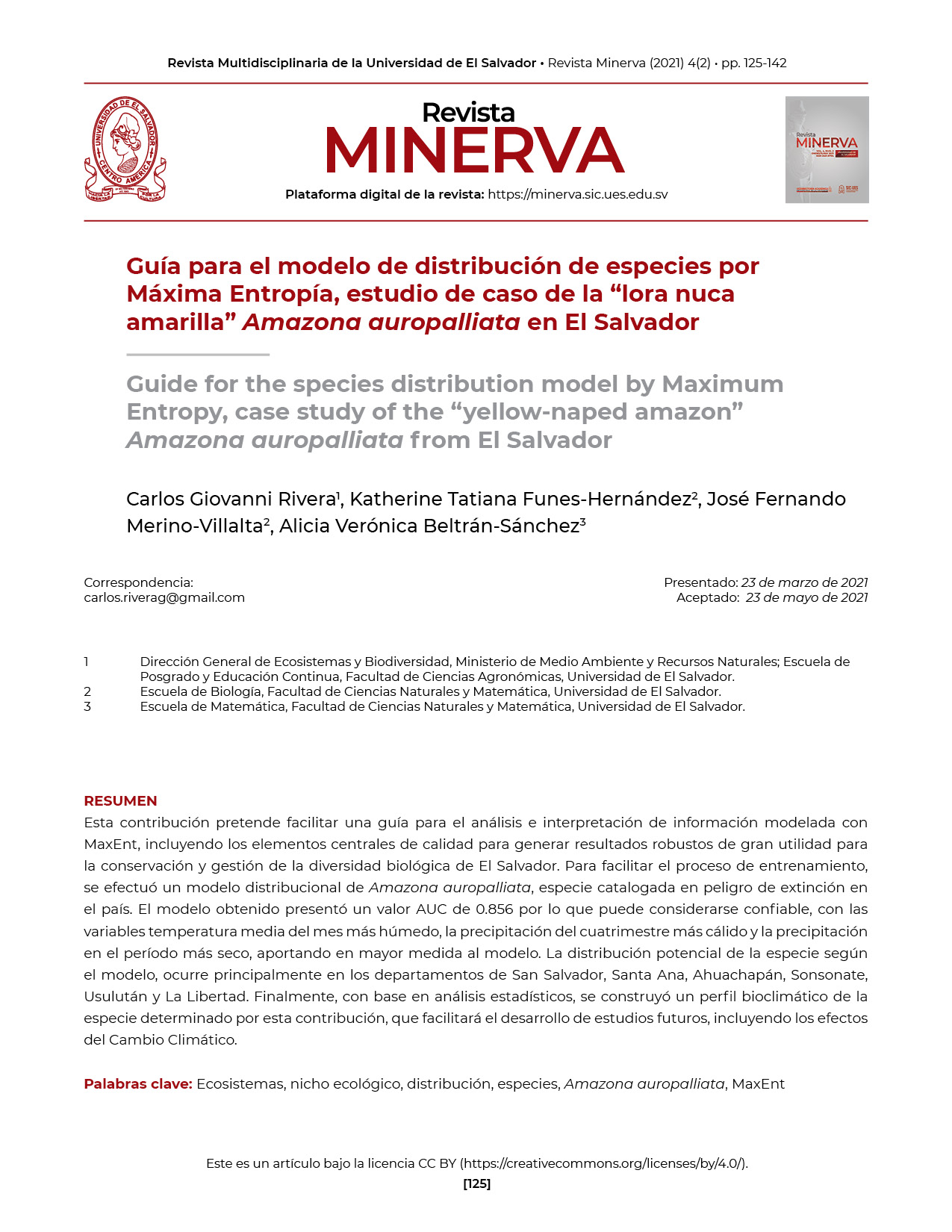Abstract
The aim of this work was to offer a guide for the analysis and interpretation of the model MaxEnt, including the quality requirements to generate solid results and provide researchers the key elements of this powerful ecological tool, in order to improve the conservation and management of the biological diversity of El Salvador. Hence, a potential distributional model of Amazona auropalliata, a species cataloged in danger of extinction in the country, was conducted. The model had an AUC (Area under the Curve) value of 0.856 considered reliable. The variables mean temperature of the wettest month, precipitation of the warmest four-month period and precipitation in the driest period, were mainly contributing to the model. The potential distribution of the species according to the model occurs mainly in the departments of San Salvador, Santa Ana, Ahuachapán, Sonsonate, Usulután and La Libertad. As a result, based on statistical analysis, a bioclimatic profile of the species determined by this contribution will facilitate the development of future studies, including the effects of Climate Change.

This work is licensed under a Creative Commons Attribution 4.0 International License.
Copyright (c) 2021 Authors who publish in Revista Minerva agree to the following terms: Authors continue as owners of their work, assigning only dissemination rights to Minerva Magazine under the standards of the Creative Commons Attribution 4.0 International License (CC BY 4.0). This license allows others to mix, adapt and build upon the work for any purpose, including commercially, and although new works must also acknowledge the initial author, they do not have to license derivative works under the same terms.





